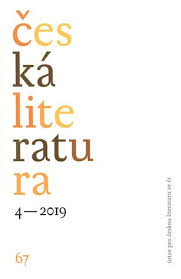Motiv sfingy v české poezii druhé poloviny 19. století
The sphynx motif in Czech poetry during the latter half of the 19th century
Author(s): Soňa ŠinclováSubject(s): Czech Literature
Published by: AV ČR - Akademie věd České republiky - Ústav pro českou literaturu
Keywords: sphynx; 19th century literature;femme fatale; Vrchlický, Jaroslav; Parnassianism;Decadence;
Summary/Abstract: The sphynx has been one of the most prominent motifs in human history over the past five thousand years albeit with various meanings and degrees of frequency. The aim of this study is to present an examination of the various forms of the sphynx in Czech poetry during the latter half of the 19th century, when it began to expand from Western European culture into other national literatures as an attractive motif at that time. The first appearances of the sphynx took place in Czech literature in romantic works during the 1840s, when under the influence of Orientalism it was part of a dream space in which it emerged in the role of a symbol of eternity. From the 1870s until the First World War we can trace divergent developments in the use of the sphynx motif inspired by the Western European cultural environment, in which the sphynx emerged on the one hand in connection with reflections of human history (Victor Hugo: The Legend of the Ages), while on the other hand from the end of the 1830s it was a prototype for the femme fatale (Heinrich Heine: Preface to the thirdedition of the Book of Songs). In the context of Czech literature we focus on the form of the sphynx in the works of Václav Bolemír Nebeský, František V. Kvapil, Jaroslav Vrchlický, Adolf Heyduk, Jiří Karásek ze Lvovic, Emanuel z Lešehrad, Karel Dostál Lutinov and others.
Journal: Česká literatura
- Issue Year: 67/2019
- Issue No: 4
- Page Range: 467-496
- Page Count: 30
- Language: Czech

